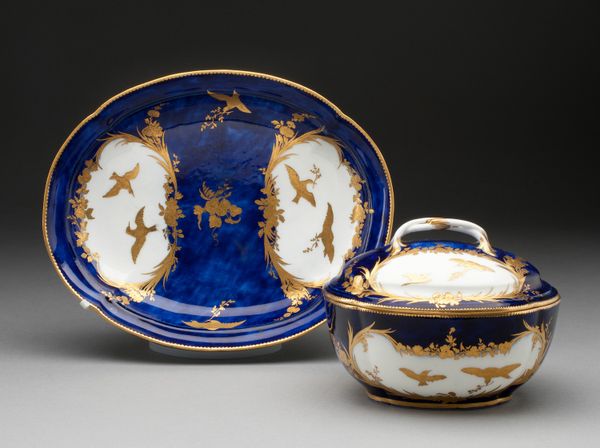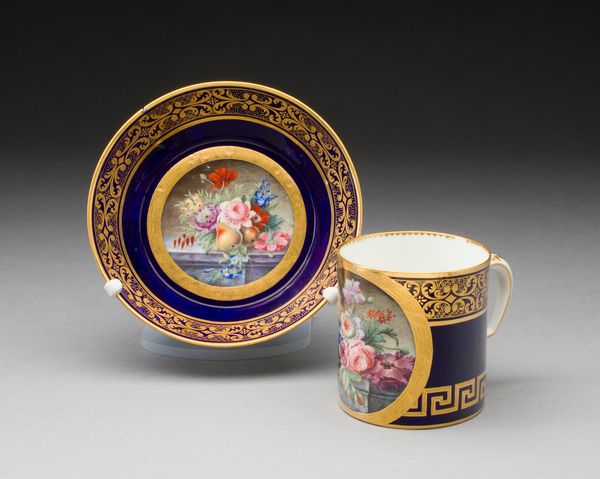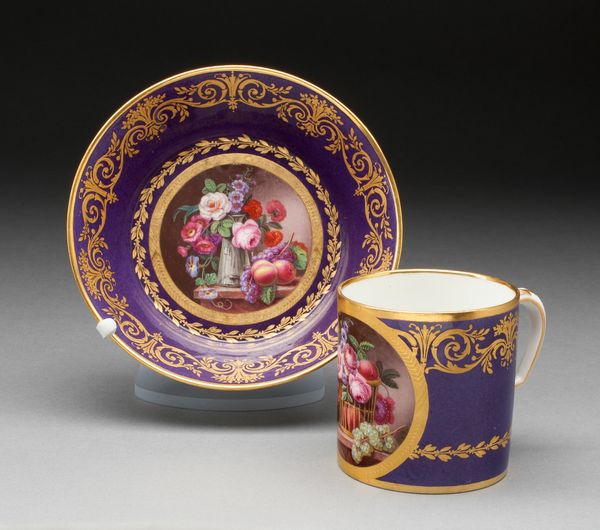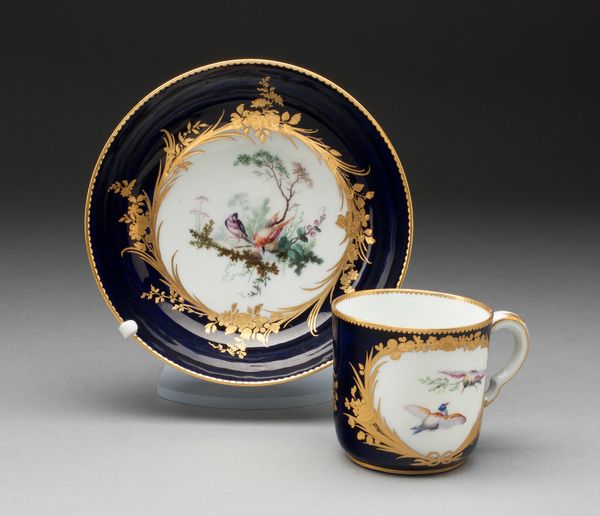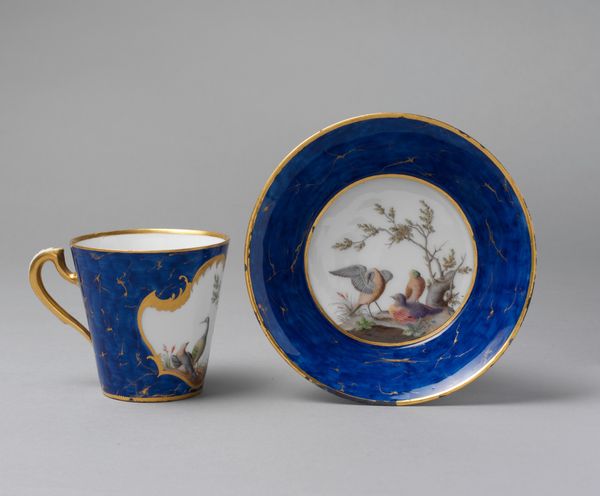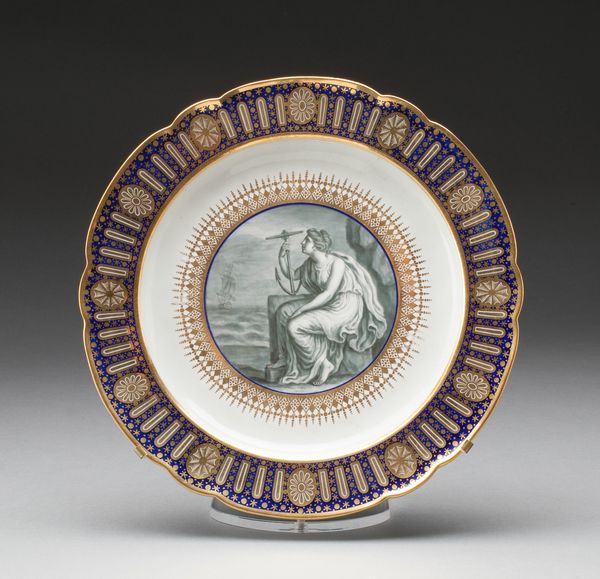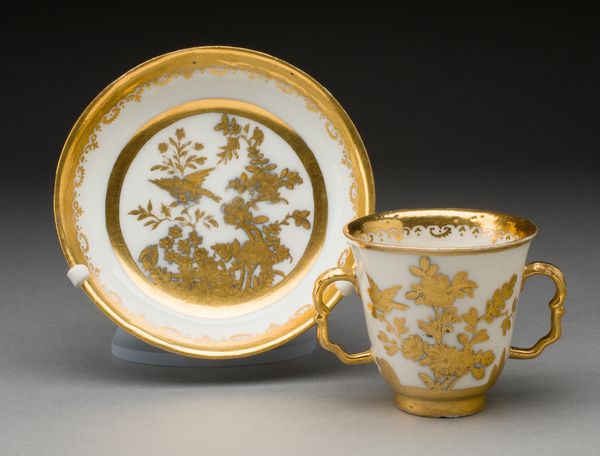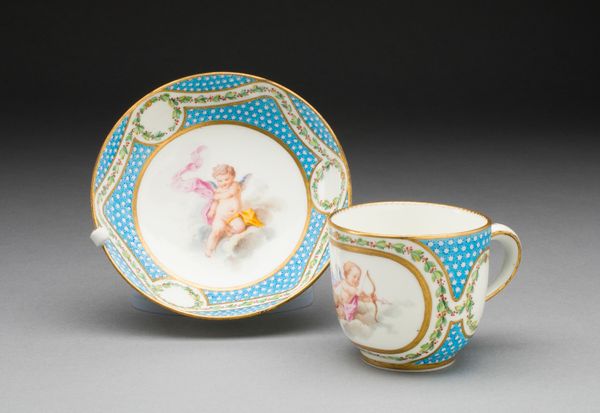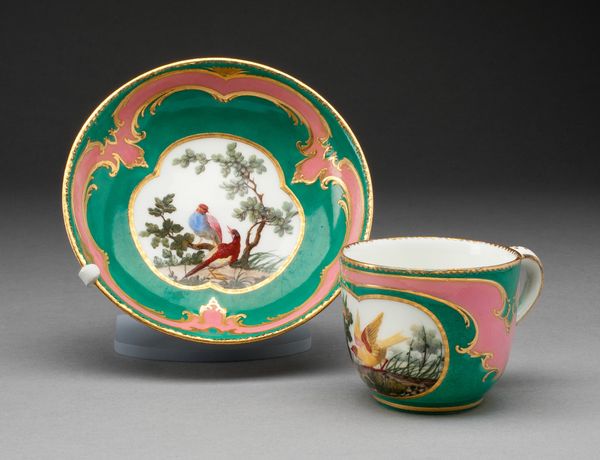
Cup and Saucer with Portrait of Benjamin Franklin c. 1780
0:00
0:00
ceramic, porcelain
#
portrait
#
neoclacissism
#
ceramic
#
jewelry design
#
porcelain
#
ceramic
#
decorative-art
Dimensions: Cup: 7.6 × 10 cm (3 × 4 in.); Saucer: 3.5 × 14.8 cm (1 3/8 × 5 13/16 in.)
Copyright: Public Domain
Curator: Well, isn’t that something? A cup and saucer gazing back at us from… I’d say a rather stiffly elegant past. I feel like I should straighten my posture just looking at it. Editor: It’s formal, no question. It almost feels… calculated, doesn’t it? So precise and posed, yet there's an intriguing personality framed in that tiny medallion on the cup! Curator: Quite! This piece, dating from around 1780, is titled "Cup and Saucer with Portrait of Benjamin Franklin" and was produced by the Manufacture nationale de Sèvres. Made of porcelain, it currently resides at the Art Institute of Chicago. Editor: Franklin on a teacup! The delicious irony! This is Neoclassicism, right? A world of idealized forms meeting political reality head-on. I want to know what Madame de…someone, was thinking, sipping from *that* particular cup! Curator: Absolutely! Neoclassicism was all about a revival of classical forms, injecting order and reason into the visual world – and it certainly ties into Franklin's reputation as a figure of enlightenment. His face encircled in gold – a new kind of royalty. The motifs surrounding him speak of classicism but… tempered. Restrained. The portrait is subtle but the cobalt blue is regal. Editor: Yes, regal and resolute! Blue as power and prestige! I bet whoever was drinking from that knew they were sipping history along with their tea. What do you make of the scene depicted on the saucer, that off-white relief against the darker plate? Curator: Ah, a nuanced touch. Allegorical. Classical. Perhaps a gentle encouragement towards peace and prosperity – images from antiquity, whispering reminders. Sèvres were geniuses at weaving coded messages into the very fabric of the porcelain. Editor: It’s just, well, slightly fussy, isn't it? Almost… a little desperate to prove its worth. It doesn’t have the clean power of later design eras. This seems like high stakes teaware, where even holding the cup could become a loaded political statement. Curator: It does exemplify a moment of poised hope and careful aspiration, wouldn’t you say? Porcelain whispers. The hopes of revolution, caught in the curve of a teacup. Editor: Teacups as time capsules. It’s amazing what these little domestic objects can tell us, centuries later.
Comments
No comments
Be the first to comment and join the conversation on the ultimate creative platform.

